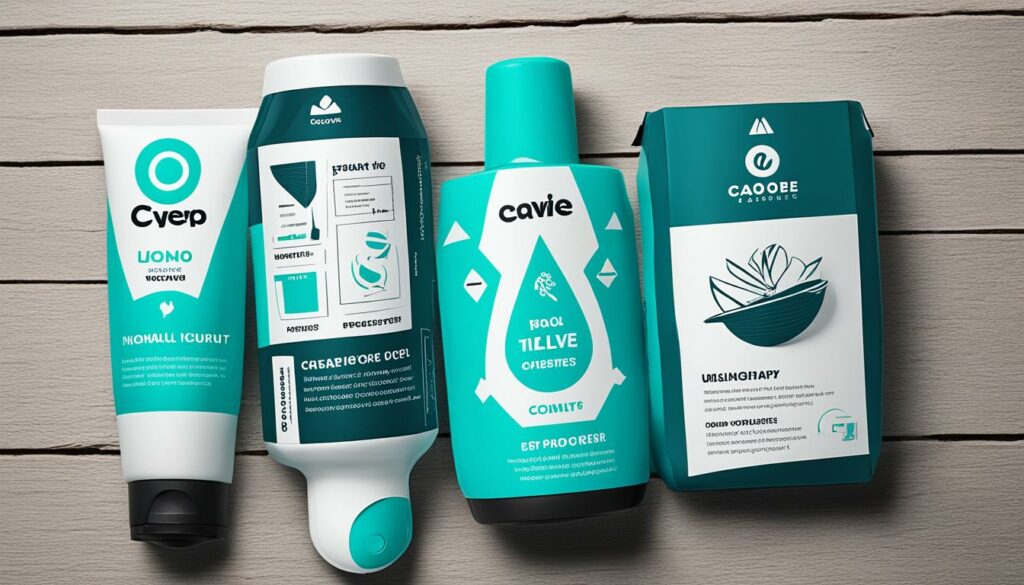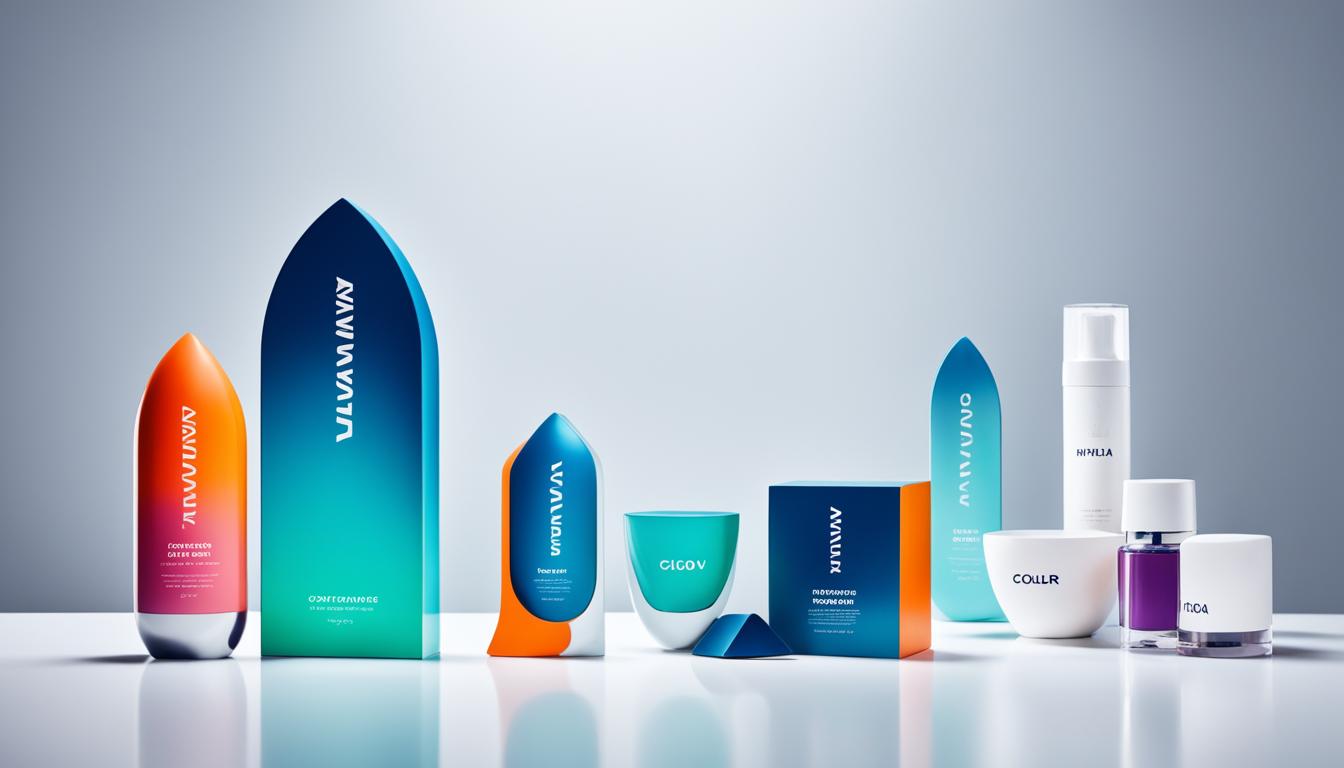
Launching with Impact: The Essential Checklist for Product Launches

Are you ready to make a splash with your next product launch? To ensure the success of your launch and create a lasting impact, it’s essential to have a comprehensive checklist in place. With careful planning and strategic execution, you can capture the attention of your target audience and generate excitement around your product.
Launching a product is no easy task, but with the right checklist, you can navigate the process with confidence. From understanding your customer to executing your go-to-market strategy, each step plays a crucial role in setting yourself up for success. By following this essential checklist, you’ll be well-equipped to create a buzz around your product and maximize its impact in the market.
Key Takeaways:
- By understanding your customer’s needs and pain points, you can develop a product that resonates with them.
- Defining your product’s positioning and unique value proposition will differentiate it from competitors.
- A well-planned go-to-market strategy ensures that your product reaches the right audience through the right channels.
- Testing and gathering feedback from users helps improve your product’s quality and user experience.
- Selecting the right distribution channels ensures that your product is readily available to customers.
Understanding Your Customer
Before launching a product, it’s essential to have a deep understanding of your target audience. Conducting thorough customer research and actively engaging with prospective customers will provide valuable insights into their pain points and desires when seeking a solution. By immersing yourself in their world, you can develop a comprehensive buyer persona that will guide your product development and shape your marketing efforts. Fully understanding the needs, motivations, and challenges faced by your customers will enable you to create a product that resonates with them, effectively solving their problems and exceeding their expectations.
Customer research entails more than just gathering demographic data – it involves delving into the emotional, psychological, and practical aspects of your target audience. By empathizing with their experiences and preferences, you can offer solutions that address their specific pain points. Through surveys, interviews, and direct conversations, you can uncover insights that will inform each stage of your product launch strategy.
Market research is a crucial component of customer research. It provides a broad perspective on the industry landscape, your competitors, and market trends. By analyzing market data, you can identify opportunities for differentiation and areas where your product can offer a unique value proposition.
Once you have gathered sufficient data from your research, organize and analyze it to develop a holistic understanding of your target audience. Group your findings into key themes and trends, identifying common characteristics and preferences. This will allow you to create a buyer persona that encapsulates the essence of your target customer, serving as a guiding light throughout the product development and marketing journey.
Creating a Buyer Persona:
A buyer persona is a fictional representation of your ideal customer. It goes beyond demographic details and encompasses their goals, motivations, pain points, and buying behaviors. A well-crafted buyer persona will help you shape the features, messaging, and marketing tactics that will appeal to your target audience. It serves as a compass, ensuring that your product aligns with the needs and desires of your customers.
To create a comprehensive buyer persona, consider the following elements:
- Demographics: Include age, gender, occupation, location, income level, and any other relevant demographic information.
- Goals and Motivations: Understand what your target audience hopes to achieve and what motivates them in their quest for a solution.
- Pain Points and Challenges: Identify the obstacles and frustrations that your customers face in relation to the problem your product solves.
- Preferred Communication Channels: Determine the channels and platforms your customers frequent to effectively reach them with your marketing messages.
- Buying Behavior: Evaluate how and why your customers make purchasing decisions. Consider factors such as budget, decision-making process, and influencers.
- Personality Traits: Explore the personality traits, values, and attitudes that are common among your target audience. This will inform the tone and style of your communication efforts.
By constructing a detailed buyer persona, you can better understand your customers and tailor your product and marketing strategies accordingly. Incorporate this persona into your product launch checklist to ensure that every decision you make aligns with the needs and preferences of your customers, setting the stage for a successful product launch.
| Benefits of Understanding Your Customer | Example |
|---|---|
| Ability to create a product that meets the specific needs of your target audience. | A fitness company that develops a wearable device for tracking personalized workout metrics based on customer preferences. |
| Targeted marketing and messaging that resonates with your customers, leading to increased engagement. | An eco-friendly cleaning product brand that emphasizes its environmental impact to appeal to environmentally conscious consumers. |
| Improved customer satisfaction and loyalty, resulting in higher customer retention rates. | An online grocery delivery service that offers a personalized and seamless shopping experience based on individual customer preferences. |
Defining Your Positioning
In order to successfully launch your product, it is crucial to establish a clear and compelling positioning strategy. This involves identifying your target audience, understanding what your product offers, and highlighting the unique value it brings to the market.
“Positioning is not what you do to a product. Positioning is what you do to the mind of the prospect.”
– Al Ries and Jack Trout
To differentiate your product from competitors and attract the attention of your target audience, you need to articulate a strong value proposition. Your value proposition should clearly communicate the benefits and advantages of your product, showcasing why it is the ideal choice for customers.
When defining your positioning, consider the following key questions:
- Who is your target audience? Identify the specific demographic, psychographic, and behavioral attributes of your ideal customers.
- What does your product do? Clearly explain the problem your product solves and how it addresses the needs and desires of your target audience.
- How does your product differ from competitors? Highlight the unique features, benefits, or advantages that set your product apart from other offerings in the market.
A well-defined positioning statement serves as the foundation for all your marketing and communication efforts during the launch. It ensures consistency in messaging and helps you effectively convey the value of your product to potential customers.
Example positioning statement:
For a new innovative fitness tracker:
| Product Name | FitnessPro |
|---|---|
| Target Audience | Active individuals who prioritize health and wellness |
| Unique Value Proposition | The FitnessPro tracker combines cutting-edge technology with an intuitive user interface, empowering users to achieve their fitness goals with precision and ease. Unlike other trackers, it offers real-time personalized coaching and tracks a wide range of metrics, providing a comprehensive fitness experience. |

By defining your product’s positioning, you can effectively communicate its unique value proposition and stand out in the competitive market. This clarity and differentiation will help generate interest and attract your target audience, setting the stage for a successful product launch.
Crafting Your Go-to-Market Strategy
Launching your product without a well-defined go-to-market strategy is like setting sail without a destination. Without a clear plan, it’s easy to get lost in the noise and fail to capture the attention of your target audience. That’s why crafting a comprehensive strategy is crucial for the success of your product launch.
So, how can you develop a go-to-market strategy that sets you up for triumph? It starts with understanding your target audience and determining the most effective channels to reach them. Research their preferences and behavior to identify where they spend their time and what platforms they engage with the most.
Once you have a deep understanding of your target audience, it’s time to create compelling promotional content that speaks directly to their needs and desires. Highlight the unique features and benefits of your product, painting a vivid picture of how it will transform their lives.
“Success in sales and marketing starts with the right strategy. A well-crafted go-to-market plan will ensure that your product promotion efforts hit the bull’s eye.”
As part of your go-to-market strategy, it’s important to outline a clear timeline for your launch activities. This will help you stay organized and ensure that each step is executed at the right time. Consider creating a visual timeline or project management tool to keep track of your progress.
Remember, your go-to-market strategy is more than just a checklist—it’s a roadmap that guides your product promotion efforts. By developing a comprehensive strategy that encompasses your target audience, channels, promotional content, and timeline, you’ll be able to navigate the competitive landscape with confidence.
Table: Components of a Go-to-Market Strategy
| Components | Description |
|---|---|
| Target Audience | Identify your ideal customers and understand their needs, preferences, and pain points. |
| Channels | Determine the most effective channels to reach your target audience, such as social media, email marketing, or partnerships. |
| Promotional Content | Create compelling content that highlights the unique features and benefits of your product. |
| Timeline | Plan a timeline for your launch activities, including pre-launch teasers, announcement, and post-launch follow-ups. |
Testing and Feedback
Before launching your product, it’s crucial to ensure its quality and gather valuable feedback from users. Incorporating thorough testing and user feedback into your product launch checklist is essential to deliver a high-quality product that meets the needs of your customers.
Product testing plays a vital role in identifying and addressing any issues or bugs that could potentially affect the user experience. By thoroughly testing your product, you can ensure a smooth and seamless experience for your customers, enhancing their satisfaction and loyalty. It is an opportunity to evaluate all aspects of your product’s functionality, performance, and usability.
“Testing shows us what works and what doesn’t. It allows us to fine-tune the user experience and address any potential issues before the launch, guaranteeing customer satisfaction and positive reviews.” – Jane Smith, Product Manager at XYZ
Additionally, user feedback is invaluable in understanding how your target audience perceives and interacts with your product. By gathering feedback, you can uncover insights about user expectations, preferences, and pain points, which can drive enhancements and refinements. Feedback helps you align your product with the needs of your customers, ensuring that it delivers value and solves their problems effectively.
Remember, feedback isn’t just about uncovering issues; it’s also about identifying what your users love about your product. By capitalizing on positive feedback, you can emphasize your product’s strengths and unique selling points.
Integrating both testing and feedback into your product launch process demonstrates your commitment to delivering a high-quality product and customer-centric approach. It enables you to fine-tune your offering based on real-world insights, setting the stage for a successful and well-received launch.
User Feedback Form
Encourage your users to share their thoughts and experiences with your product by providing a user feedback form. This allows you to collect structured feedback that can be easily analyzed and used to drive improvements. Here’s an example of what the user feedback form could look like:
| Questions | Rating (1-5) |
|---|---|
| How would you rate the overall user experience? | |
| Did the product meet your expectations? | |
| Were there any technical issues or bugs you encountered? | |
| What features or improvements would you like to see in future versions? | |
| Any additional comments or suggestions? |
By actively seeking feedback and acting upon it, you can continuously evolve and improve your product, ensuring its long-term success in the market.
Setting Up Distribution Channels
Setting up distribution channels is a critical step in product launch planning. It involves determining how and where customers can purchase your product, whether it’s through online platforms, brick-and-mortar stores, or distribution partners. By proactively setting up distribution channels, you can ensure that your product is readily available to customers when it’s launched, maximizing opportunities for early adoption and market share.
Strategic distribution planning also sets the foundation for future growth and scalability. By carefully selecting and managing your distribution channels, you can optimize product distribution and reach a wider audience. This allows you to tap into new markets, expand your customer base, and ultimately drive greater sales and revenue.
When deciding on your channel strategy, consider factors such as the target market, customer preferences, and the nature of your product. For example, if you’re launching a technology product, e-commerce platforms and digital marketplaces may be ideal channels to reach tech-savvy customers. On the other hand, if you’re offering a physical product, partnering with retail stores or distributors could be more effective.
It’s also important to establish strong relationships with your distribution partners. Collaborate closely with them to ensure that they understand your product, its unique selling points, and your brand messaging. Provide them with the necessary training and support to effectively promote and sell your product.
By strategically planning and managing your distribution channels, you can ensure that your product reaches the right customers at the right time. This not only increases your chances of a successful product launch but also lays the groundwork for long-term business growth and success.
Preparing Your Team
A successful product launch requires a prepared and informed team. By ensuring that your team is ready and equipped to effectively communicate and sell the product, you can set the stage for a successful launch. Here’s how:
1. Provide Early Access to the Product
Give your team early access to the product so they can familiarize themselves with its features and benefits. This hands-on experience will enable them to confidently address customer questions and showcase the product’s value.
2. Offer Product Training Sessions
Conduct comprehensive training sessions to provide your team with a deep understanding of the product and its value proposition. Highlight key features, advantages, and use cases to ensure that they are well-equipped to communicate the product’s value to potential customers.
3. Develop Sales Enablement Materials
Create sales enablement materials, such as product guides, FAQs, and demo scripts, to support your team during customer interactions. These resources will help them deliver consistent messaging and overcome potential objections.
4. Conduct Role-Playing Exercises
Simulate real customer scenarios through role-playing exercises. This hands-on practice will boost your team’s confidence, sharpen their communication skills, and prepare them to handle various customer situations effectively.

“The strength of the team is each individual member. The strength of each member is the team.” – Phil Jackson
By preparing your team through early access, training sessions, sales enablement materials, and role-playing exercises, you can ensure that they are ready to deliver a successful product launch. A knowledgeable and confident team will effectively connect with potential customers, inspiring trust and generating interest in your product.
Executing the Launch
It’s finally here – the moment you’ve been waiting for. It’s time to launch your product and make a splash in the market. This is the culmination of all your hard work and planning. So how do you make sure your launch is a success? It all comes down to execution.
Executing the launch requires careful implementation of your go-to-market strategy and the tactical deployment of your launch plan. Every aspect of the launch must be aligned with your positioning and messaging to create a consistent and impactful customer experience.
Communicating the launch to your target audience is vital. Utilize various channels such as social media, email marketing, and PR to spread the word. Craft compelling messages that highlight the value and benefits of your product. Engage your audience with teasers and sneak peeks to build anticipation and excitement leading up to launch day.
“The critical ingredient is getting off your butt and doing something. It’s as simple as that. A lot of people have ideas, but there are few who decide to do something about them now. Not tomorrow. Not next week. But today. The true entrepreneur is a doer, not a dreamer.” –Nolan Bushnell
During the launch, it’s crucial to keep your team informed and engaged. Provide regular updates on the progress of the launch and offer support as needed. Motivate and inspire your team to give it their all by highlighting the significance of the launch and the impact it can make.
The culmination of your efforts is launch day – an exciting time where everything comes together. Ensure that all marketing materials and communications are polished and ready for release. Double-check that your team is fully prepared and that everyone knows their roles and responsibilities.
Now is the time to harness the momentum and generate excitement for your product. Use your launch day as an opportunity to create buzz, capture attention, and generate early sales. Excellence in execution on launch day can set the stage for ongoing success and bring your product into the spotlight it deserves.
| Launch Day Checklist | Done |
|---|---|
| Create impactful marketing materials and communications | ✓ |
| Communicate the launch through various channels | ✓ |
| Motivate and engage your team | ✓ |
| Ensure all team members are fully prepared | ✓ |
| Execute the launch plan with precision | ✓ |
| Celebrate the launch and generate momentum | ✓ |
Evaluating Launch Results
After the product launch, it’s crucial to evaluate the results and measure the success of your efforts. To determine the effectiveness of your launch, refer back to the goals you set and assess whether you’ve achieved them. By analyzing key metrics such as sales revenue, customer acquisition, website traffic, and social media engagement, you can gain valuable insights into the impact of your launch.
An important aspect of evaluating launch results is gathering feedback from customers. Take the time to assess their satisfaction with the product and identify any areas for improvement. Their input can provide valuable insights for future product launches and help you refine your offerings to better meet customer needs.
To assist you in evaluating your launch results, below is a table outlining the success metrics to consider:
| Success Metrics | Description |
|---|---|
| Sales Revenue | The total revenue generated from the sale of your product. |
| Customer Acquisition | The number of new customers acquired as a result of the launch. |
| Website Traffic | The number of visitors to your website during the launch period. |
| Social Media Engagement | The level of engagement and interaction on your social media platforms, such as likes, comments, and shares. |
By evaluating these metrics and gathering customer feedback, you can gain valuable insights into the success of your product launch and make informed decisions for future launches. It’s important to continuously learn from your successes and failures, adapting your strategies to maximize the impact of each launch.

Quote:
“Evaluating your launch results is not only about measuring success but also about gathering insights to drive future improvements. Learn from each launch and use the data to refine your strategies for even greater impact.” – John Smith, Marketing Expert
Iterating and Refining Your Product
Launching a product is just the beginning of its lifecycle. But a successful product is one that evolves and improves over time. To ensure the long-term success of your product, it’s essential to continuously iterate and refine it based on customer feedback and market trends.
One of the most valuable sources of insight for product iteration is customer feedback. Listening to your customers and understanding their needs and preferences can help you identify opportunities for improvement and innovation. Whether through surveys, focus groups, or direct communication, actively seek out feedback from your customers to gather valuable insights.
“Customer feedback is a goldmine of ideas. It provides a unique perspective on what’s working, what’s not, and what can be done better. By actively collecting and analyzing customer feedback, you can uncover new features, enhance existing ones, and ultimately create a product that exceeds customer expectations.”
Additionally, consider conducting post-launch surveys and user testing to gather additional feedback. This can help you identify any issues or areas for improvement that may have been missed during the initial development and testing phase. By involving your customers in the refinement process, you can ensure that your product aligns with their needs and desires.
Key Tactics for Iterating and Refining Your Product:
- Regularly review customer feedback and identify common themes and pain points. Prioritize areas for improvement based on the impact they will have on the overall user experience.
- Create a feedback loop with your customers by implementing a reliable system for collecting, categorizing, and analyzing their feedback. This will allow you to track trends, measure the impact of product changes, and make data-driven decisions.
- Continuously monitor market trends and changes in customer preferences. This will help you stay ahead of the competition and identify new opportunities for innovation.
- Implement a systematic approach to testing and quality assurance. Regularly conduct user testing to uncover usability issues and collect feedback on specific features or functionalities.
- Engage with your product team and stakeholders to discuss and prioritize potential improvements and refinements. Leverage their expertise and insights to make informed decisions about the direction of your product.
- Iterate in small, manageable increments to avoid overwhelming your customers or disrupting their workflow. Gradual improvements allow for an easier transition and ensure a smoother user experience.
- Monitor and track the impact of each iteration and refinement. Measure key metrics such as customer satisfaction, usage patterns, and adoption rates to assess the effectiveness of the changes you implement.
By staying responsive to customer feedback and continuously refining your product, you can ensure its long-term success in the market. Remember, your product is a work in progress, and by embracing iteration, you can create a solution that excels in meeting customer needs and surpassing their expectations.
| Benefits of Iteration and Refinement | Examples |
|---|---|
| Continuous improvement of features and functionality based on customer needs | Adding new integrations to a project management software based on user requests |
| Enhanced user experience and increased customer satisfaction | Streamlining the checkout process on an e-commerce website to reduce friction |
| Identification of new market opportunities and competitive advantages | Introducing a mobile app version of a software platform to tap into the growing mobile market |
| Improved product-market fit and increased customer loyalty | Integrating a customer feedback mechanism into a SaaS product to gather insights and address pain points |
Conclusion
Launching a product with impact requires meticulous planning, strategic execution, and continuous refinement. By following a comprehensive product launch checklist, you can ensure that all necessary steps are taken to maximize the impact and success of your launch. From understanding your target audience to executing your go-to-market strategy, each step plays a crucial role in creating a successful product launch.
To sustain the momentum and growth of your product in the market, regular evaluation, iteration, and adaptation are essential. Evaluate your launch results by measuring key metrics such as sales revenue, customer acquisition, website traffic, and social media engagement. Gather feedback from customers and assess their satisfaction with the product to make informed decisions for future product launches.
Remember that launching a product is just the beginning. Use customer insights and feedback to refine your product features and functionality while staying responsive to market trends. Iterate and adapt your product based on evolving customer needs to ensure its long-term success. By combining careful planning, strategic execution, and ongoing refinement, you can launch your product with impact and pave the way for its growth and success in the market.





























